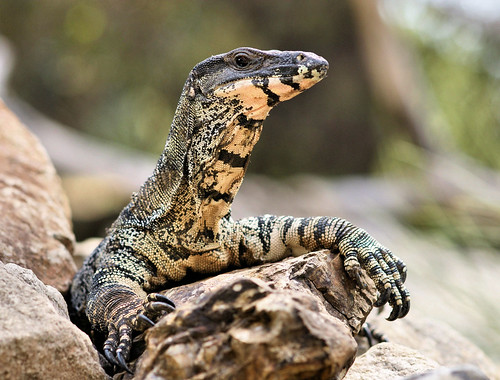Post by Reticulatus on Feb 25, 2014 8:13:35 GMT 5
Haast's Eagle

Haast's Eagles were the largest known true raptors, slightly larger even than the largest living vultures. Female eagles are significantly larger than males. Females of the Haast species are believed to have weighed 10–15 kg (22–33 lb) and males 9–12 kg (20–26 lb). They had a relatively short wingspan, measuring roughly 2.6–3 m (8 ft 6 in–9 ft 10 in). This wingspan is similar to that of some extant eagles (the wingspan now reported in large specimens of Golden Eagles and Steller's Sea Eagles). Even the largest extant eagles, however, are about forty percent smaller in body size than the size of Haast's Eagles.
Short wings may have aided Haast's Eagles when hunting in the dense scrubland and forests of New Zealand. Haast's Eagle sometimes is portrayed incorrectly as having evolved toward flightlessness, but this is not so; rather it represents a departure from the mode of its ancestors' soaring flight, toward higher wing loading. Two of the largest extant eagles, the Harpy Eagle and the Philippine Eagle, also have similarly reduced relative wing-length in adaptation to forest-dwelling.
The strong legs and massive flight muscles of these eagles would have enabled the birds to take off with a jumping start from the ground, despite their great weight. The tail was almost certainly long, up to 50 cm (20 inches) in female specimens, and very broad. This characteristic would compensate for the reduction in wing area by providing additional lift. Total length is estimated to have been up to 1.4 m (4 ft 7 in) in females, with a standing height of approximately 90 cm (2 ft 11 in) tall or perhaps slightly greater.
Haast's Eagles preyed on large, flightless bird species, including the moa, which was up to fifteen times the weight of the eagle. It is estimated to have attacked at speeds up to 80 km/h (50 mph), often seizing its prey's pelvis with the talons of one foot and killing with a blow to the head or neck with the other.[citation needed] Its size and weight indicate a bodily striking force equivalent to a cinder block falling from the top of an eight-story building. Its large beak also could be used to rip into the internal organs of its prey and death then would have been caused by blood loss. In the absence of other large predators or scavengers, a Haast's Eagle easily could have monopolised a single large kill over a number of days.
Brontornis

B. burmeisteri was the second largest species of phorusrhacid, with a height of around 2.80 meters (9.19 feet) and an estimated weight of 350–400 kg (772-882 lbs) (Alvarenga & Höfling, 2003), making it the third-heaviest bird ever according to current knowledge (after Aepyornis maximus and Dromornis stirtoni), and the most massive land predator of its time and place. Due to its bulk, it probably had a lifestyle between an ambush predator and one that actively chased prey, pouncing on the latter from a hideout and bringing it down by sheer force of attack after a short chase. In attacking prey (but probably not necessarily in a defensive situation, as it was too slow-moving) it most likely was the dominant carnivore of Miocene Patagonia, being able to kill even large animals such as the elephant-like Astrapotherium and in the predatory role being on par with a pack of Thylacosmilus (metatherian saber-tooth). It coexisted with some slightly smaller and more active phorusrhacids like Phorusrhacos, but apparently became extinct before the appearance of the immense Argentavis, the largest flying bird ever.














